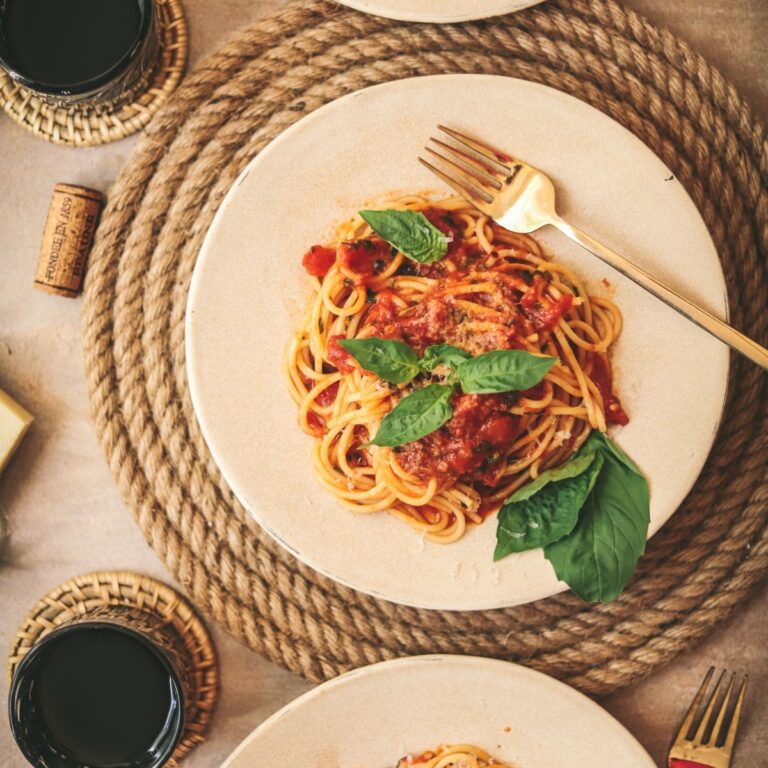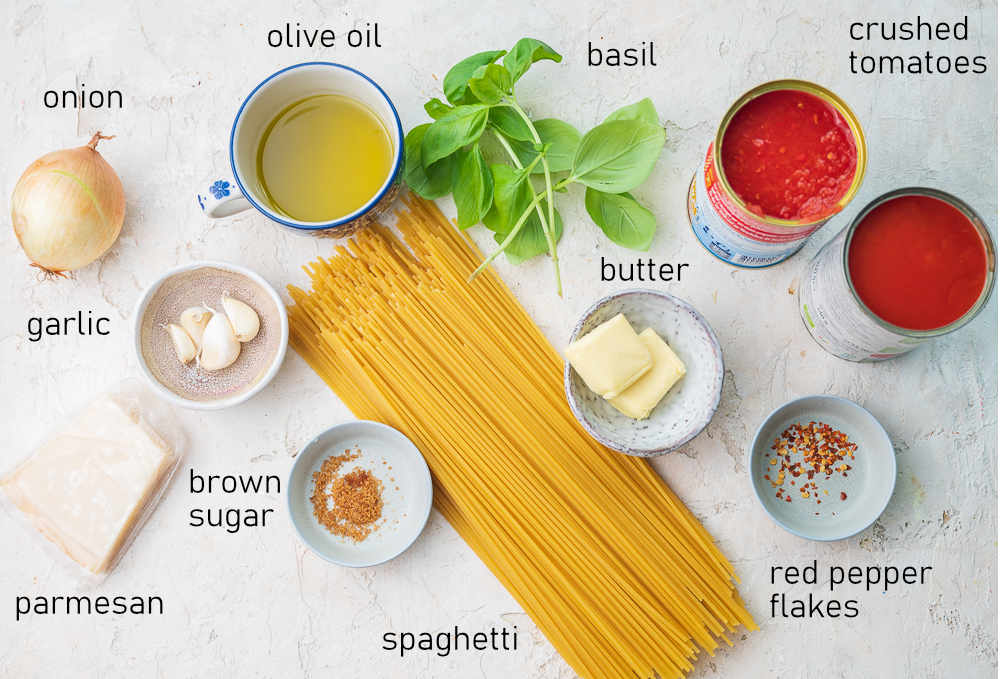Embark on a culinary adventure with the Bear Pasta Sauce Recipe, a symphony of flavors that will tantalize your taste buds and leave you craving for more. This delectable sauce, steeped in history and tradition, is sure to become a staple in your kitchen, offering a versatile accompaniment to a wide array of dishes.
Whether you’re a seasoned chef or a novice cook, this recipe is meticulously crafted to guide you through every step, ensuring a seamless and rewarding cooking experience. So gather your ingredients, don your apron, and prepare to create a pasta sauce that will transport you to culinary heaven.
Introduction
Pasta sauces are a delicious and versatile way to add flavor to your favorite pasta dishes. They come in a wide variety of flavors, from classic tomato sauce to creamy Alfredo sauce. Bear pasta sauce is a popular choice for those who love a hearty and flavorful sauce. It is made with ground beef, tomatoes, onions, and spices, and it has a rich, savory flavor that is perfect for pairing with any type of pasta.
There are many reasons why bear pasta sauce is so popular. First, it is easy to make. The ingredients are simple and easy to find, and the sauce can be made in just a few minutes. Second, it is versatile. Bear pasta sauce can be used with any type of pasta, and it can also be used as a topping for pizza or other dishes. Third, it is delicious. The combination of ground beef, tomatoes, onions, and spices creates a rich, flavorful sauce that is sure to please everyone at the table.
Popularity of Bear Pasta Sauce
- Easy to make
- Versatile
- Delicious
Ingredients and Nutritional Information

Bear pasta sauce is a flavorful and hearty sauce that is typically made with a variety of ingredients, including ground bear meat, tomatoes, onions, garlic, and spices.
A single serving of bear pasta sauce (approximately 1/2 cup) contains approximately:
Nutritional Information
- Calories: 250
- Fat: 15 grams
- Protein: 20 grams
- Carbohydrates: 10 grams
Step-by-Step Recipe
Bear pasta sauce is an exotic and flavorful dish that combines the richness of bear meat with the tangy sweetness of tomatoes. While the main ingredient may seem intimidating, the preparation is surprisingly straightforward. Follow these step-by-step instructions to create a delectable bear pasta sauce that will tantalize your taste buds.
Before embarking on this culinary adventure, ensure you have all the necessary ingredients and equipment. You’ll need a large pot or Dutch oven, a sharp knife, a cutting board, and measuring cups and spoons. Additionally, don’t forget to wear appropriate safety gear, including an apron and heat-resistant gloves.
Marinating the Bear Meat
The first step in preparing bear pasta sauce is to marinate the bear meat. This process tenderizes the meat and infuses it with flavor. In a large bowl, combine the bear meat, olive oil, garlic, rosemary, thyme, and salt. Mix well to ensure the meat is evenly coated. Cover the bowl with plastic wrap and refrigerate for at least 4 hours, or up to overnight.
Browning the Bear Meat
Once the bear meat has marinated, it’s time to brown it. Heat a large pot or Dutch oven over medium-high heat. Add the bear meat and cook, stirring occasionally, until browned on all sides. This should take about 10-15 minutes.
Adding the Vegetables
Once the bear meat is browned, add the onions, carrots, and celery to the pot. Cook, stirring frequently, until the vegetables are softened, about 5 minutes. Then, add the garlic and cook for another minute, until fragrant.
Adding the Tomatoes
Next, add the tomatoes to the pot. You can use fresh, canned, or diced tomatoes. If using fresh tomatoes, be sure to remove the seeds and chop them into small pieces. Bring the mixture to a boil, then reduce heat to low and simmer for 30 minutes, or until the sauce has thickened.
Seasoning the Sauce
Once the sauce has thickened, it’s time to season it to your taste. Add salt, pepper, and any other desired spices or herbs. You can also add a bit of honey or maple syrup for sweetness, if desired. Simmer for an additional 15 minutes, or until the sauce has reached your desired consistency.
Serving the Bear Pasta Sauce
Serve the bear pasta sauce over your favorite pasta. You can also serve it with crusty bread or a side of vegetables. Enjoy!
Variations and Substitutions: The Bear Pasta Sauce Recipe

Bear pasta sauce is a versatile dish that can be customized to your liking. Here are some common variations and ingredient substitutions to consider:
Meat Variations
- Ground beef: Substitute ground beef for bear meat to create a more traditional pasta sauce.
- Italian sausage: Add Italian sausage to the sauce for a spicy and flavorful twist.
- Turkey or chicken: Use ground turkey or chicken for a leaner alternative to bear meat.
Vegetable Substitutions
- Mushrooms: Add sliced mushrooms to the sauce for an earthy flavor.
- Bell peppers: Chop bell peppers and add them to the sauce for a bit of sweetness and crunch.
- Spinach: Wilt spinach and stir it into the sauce for a boost of greens.
Sauce Variations, The bear pasta sauce recipe
- Creamy bear sauce: Add a cup of heavy cream to the sauce for a richer, creamier texture.
- Spicy bear sauce: Add a teaspoon of red pepper flakes or a dash of cayenne pepper to the sauce for a kick of heat.
- Herbed bear sauce: Stir in a tablespoon of dried oregano or basil to the sauce for an aromatic twist.
Serving Suggestions

Bear pasta sauce is a versatile condiment that can elevate a variety of dishes. Its rich, savory flavor pairs well with various pasta shapes, meats, and vegetables.
When serving bear pasta sauce, consider the following dishes:
- Pasta: Spaghetti, penne, or rigatoni are classic choices that provide a hearty base for the sauce.
- Meat: Ground beef, sausage, or chicken can be added to the sauce for a protein-packed meal.
- Vegetables: Bell peppers, onions, and mushrooms are great additions to the sauce, providing color and texture.
Presentation and Garnishing
To make your bear pasta sauce dish visually appealing, consider the following presentation tips:
- Garnish with fresh herbs: Sprinkle chopped basil, oregano, or parsley on top of the dish for a burst of color and flavor.
- Add a drizzle of olive oil: A drizzle of extra virgin olive oil adds a touch of richness and shine to the sauce.
- Serve with crusty bread: A side of crusty bread is perfect for soaking up the delicious sauce.
Preservation and Storage

Bear pasta sauce can be stored in the refrigerator for up to 3 days. For longer storage, it can be frozen for up to 3 months.
Refrigeration
* Store the sauce in an airtight container.
* Let the sauce cool completely before refrigerating.
* Defrost the sauce in the refrigerator overnight before using.
Freezing
* Freeze the sauce in freezer-safe containers.
* Leave some headspace in the containers to allow for expansion.
* Defrost the sauce in the refrigerator overnight before using.
Culinary History and Origin

Bear pasta sauce, a unique and intriguing culinary creation, has a rich history that traces back to the rugged landscapes and diverse cultures of the northern regions. Its origins are shrouded in mystery, but its flavors and techniques have been passed down through generations, evolving and adapting to the cultural influences and regional variations that shape its distinctive character.
One theory suggests that bear pasta sauce originated in the cold, unforgiving wilderness of Siberia. The indigenous people of these regions, with their limited access to fresh produce during the harsh winter months, relied on preserved and fermented foods to sustain themselves. Bear meat, readily available in the forests, became a staple ingredient, and its rich, gamey flavor proved to be an ideal base for a hearty and nourishing sauce.
Cultural Influences
As bear pasta sauce spread from its Siberian roots, it encountered various cultural influences that shaped its evolution. In the mountainous regions of the Caucasus, the sauce was enriched with spices and herbs, reflecting the vibrant culinary traditions of the region. In the Baltic countries, it became a beloved dish, often served with pickled vegetables and sour cream, adding a tangy and refreshing contrast to the robust sauce.
The bear pasta sauce recipe is a delicious and easy way to add flavor to your pasta dishes. If you’re looking for a sauce that’s a little more flavorful, you can try the small sliders sauce recipe . This sauce is made with a combination of ketchup, mustard, mayonnaise, and spices, and it’s perfect for dipping sliders or spreading on sandwiches.
Once you’ve tried the small sliders sauce recipe, you can go back to the bear pasta sauce recipe and enjoy it with your favorite pasta.
Regional Variations
Over time, bear pasta sauce has developed distinct regional variations. In Italy, where it is known as “Sugo di Orso,” it is typically prepared with a combination of bear meat, tomatoes, and red wine, creating a rich and flavorful sauce. In Poland, the sauce is often thickened with buckwheat flour, giving it a unique texture and earthy flavor. In Hungary, it is seasoned with paprika, adding a smoky and slightly spicy touch to the dish.
Last Word
As you savor the exquisite flavors of the Bear Pasta Sauce, let its rich history and cultural influences inspire your culinary creativity. Experiment with variations, explore different serving suggestions, and preserve your culinary masterpiece for future enjoyment. The Bear Pasta Sauce Recipe is more than just a recipe; it’s a culinary legacy waiting to be passed down through generations.
Popular Questions
What is the origin of the Bear Pasta Sauce Recipe?
The origins of the Bear Pasta Sauce Recipe can be traced back to the mountainous regions of Italy, where hunters would often prepare hearty meals using wild game and locally sourced ingredients.
Can I substitute other ingredients in the recipe?
Yes, you can substitute certain ingredients based on your preferences or dietary restrictions. For instance, you can use ground beef or turkey instead of bear meat, and vegetable broth instead of beef broth.
How long can I store the Bear Pasta Sauce?
Properly stored in an airtight container, the Bear Pasta Sauce can be refrigerated for up to 3 days or frozen for up to 3 months.
